Pricing Guides & Dictionary of Makers Marks for Antiques & Collectibles

COLLECTIBLE ANTIQUE DERBY PORCELAIN:
How to Research Them
Join the most updated and complete collectibles research online - Learn more...
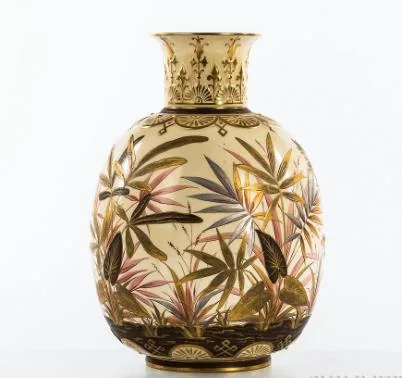 Derby porcelain, also known as Derby china, is a type of English porcelain that was produced in Derbyshire between 1745 and 1848. Collectors love Derby porcelain for its exquisite designs, intricate details, and historic significance. If you're interested in collecting antique Derby porcelain, there are a few things you should know about how to research them.
Derby porcelain, also known as Derby china, is a type of English porcelain that was produced in Derbyshire between 1745 and 1848. Collectors love Derby porcelain for its exquisite designs, intricate details, and historic significance. If you're interested in collecting antique Derby porcelain, there are a few things you should know about how to research them.
Identifying Derby Porcelain
The first step in researching Derby porcelain is to be able to identify it. Derby porcelain is known for its soft-paste body, which is similar to that of other English porcelain manufacturers such as Chelsea and Bow. However, there are a few key features that set Derby porcelain apart:
- Derby porcelain typically has a blue crown mark on the bottom, which was used from 1775 to 1848. Earlier pieces may have a different mark or no mark at all.
- Derby porcelain is often decorated with floral patterns, but it can also feature landscapes, animals, and figurines. The designs are typically intricate and finely detailed.
- The quality of Derby porcelain is generally high, with a translucent body and a smooth glaze. If you run your finger over the surface, you should be able to feel the faint ridges left by the brushstrokes.
Researching Derby Porcelain
One of the best ways to research Derby porcelain is to consult reference books and online resources. Here are a few sources of information to get you started:
- The Handbook of British Pottery and Porcelain Marks: This comprehensive guidebook includes information on over 4,000 British pottery and porcelain manufacturers, including Derby. It also includes photographs of marks and dates, as well as tips on identifying and valuing pieces.
- The Derby Porcelain International Society: This organization is dedicated to the study and appreciation of Derby porcelain. Its website includes a wealth of information on Derby porcelain history, production techniques, and patterns, as well as a forum for collectors to share their knowledge and ask questions.
- Auction House Catalogues: Auction houses often sell antique Derby porcelain, and their catalogues can be a valuable source of information on individual pieces. The catalogues usually include a description of the piece, its age, condition, and provenance, as well as an estimated value.
- Online Antique Marketplaces: Online marketplaces such as eBay and Ruby Lane often have listings for antique Derby porcelain. You can use these listings to compare prices and identify rare or unusual patterns.
Caring for Derby Porcelain
If you're lucky enough to own a piece of antique Derby porcelain, it's important to take good care of it to preserve its value and beauty Here are some tips for caring for your Derby porcelain:
- Handle with Care: Antique porcelain is delicate and can easily chip or crack if mishandled. Always pick up pieces with two hands and avoid gripping them too tightly.
- Avoid Extreme Temperatures: Sudden changes in temperature can cause porcelain to crack or break. Avoid placing pieces in direct sunlight or near heat sources such as radiators or stoves.
- Store Safely: When not in use, store your Derby porcelain in a secure location where it won't be bumped or knocked over. Use soft padding or cloth to protect it from scratches and other damage.
- Clean Carefully: Only use mild, non-abrasive cleaners to clean your Derby porcelain. Avoid soaking it in water or using harsh chemicals, as these can damage the glaze or paint. Use a soft cloth or brush to gently remove dirt and stains, and dry thoroughly before storing.
By following these simple steps, you can help ensure that your Derby porcelain remains a valuable and treasured part of your collection for years to come.
CONCLUSION
Researching collectible antique Derby porcelain can be a fascinating and rewarding experience for collectors and enthusiasts alike. Whether you're interested in the history, design, or value of these exquisite pieces, there are many resources available to help you learn more. By identifying the key features of Derby porcelain, consulting reference books and online resources, and taking good care of your collection, you can appreciate and enjoy these beautiful pieces for years to come.
Unlock the true value of your collection with our comprehensive research guides from identifying makers' marks to appraising all kinds of antiques and collectibles, including items featured in this article.
Our up-to-date information will give you an accurate understanding of your items' worth. Don't miss out on this valuable resource - visit our research tools today!
In addition to some examples shown below on this page, you can also search our price guide for your own treasures.
Examples of related items from our Price Guides
-
 14 ROYAL CROWN DERBY PORCELAIN ITEMS, IN
[more like this]
14 ROYAL CROWN DERBY PORCELAIN ITEMS, IN
[more like this]
-
 GROUPING ROYAL CROWN DERBY IMARI PORCELA
[more like this]
GROUPING ROYAL CROWN DERBY IMARI PORCELA
[more like this]
-
 Sumptuous Seventy-Nine-Piece Assembled C
[more like this]
Sumptuous Seventy-Nine-Piece Assembled C
[more like this]
-
 8 CHELSEA, DERBY, BOW PORCELAIN FIGURES8
[more like this]
8 CHELSEA, DERBY, BOW PORCELAIN FIGURES8
[more like this]
-
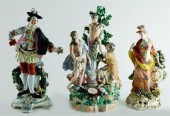 DERBY PORCELAIN FIGURE GROUP, A DERBY PO
[more like this]
DERBY PORCELAIN FIGURE GROUP, A DERBY PO
[more like this]
-
 32PCS ASSORTED ENGLISH IMARI PALETTE TAB
[more like this]
32PCS ASSORTED ENGLISH IMARI PALETTE TAB
[more like this]
-
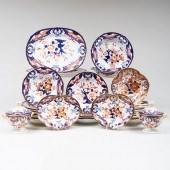 ASSEMBLED ROYAL CROWN DERBY AND BLOOR DE
[more like this]
ASSEMBLED ROYAL CROWN DERBY AND BLOOR DE
[more like this]
-
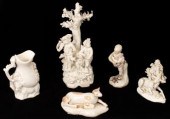 Derby and other porcelain models, compri
[more like this]
Derby and other porcelain models, compri
[more like this]
-
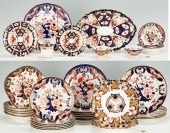 LARGE GROUP ENGLISH IMARI PATTERN DINNER
[more like this]
LARGE GROUP ENGLISH IMARI PATTERN DINNER
[more like this]
-
 8 PORCELAIN FIGURES INCLUDING DERBY & SI
[more like this]
8 PORCELAIN FIGURES INCLUDING DERBY & SI
[more like this]
-
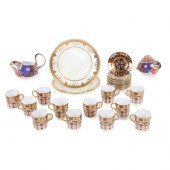 ROYAL CROWN DERBY & MINTONS FOR TIFFANY
[more like this]
ROYAL CROWN DERBY & MINTONS FOR TIFFANY
[more like this]
-
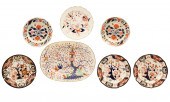 7 PIECES OF ENGLISH DERBY & OTHERS Seven
[more like this]
7 PIECES OF ENGLISH DERBY & OTHERS Seven
[more like this]
There are many more auction results available to our members...





